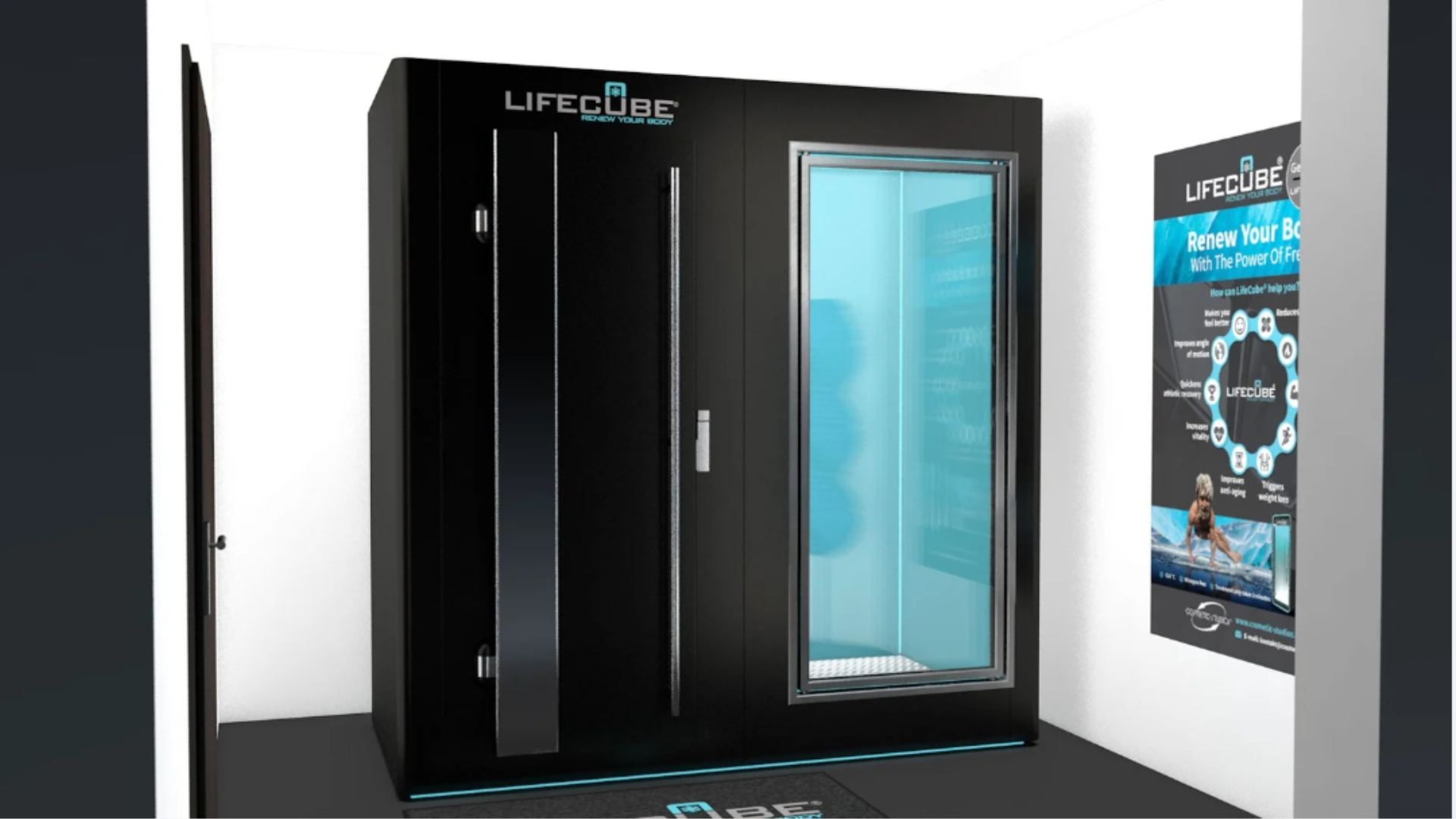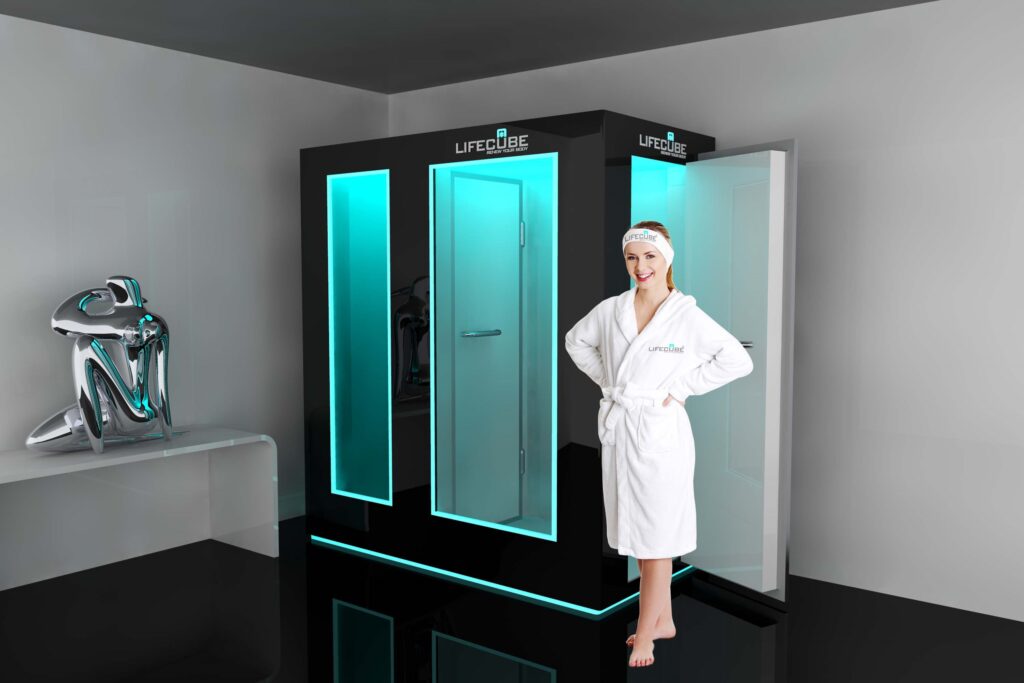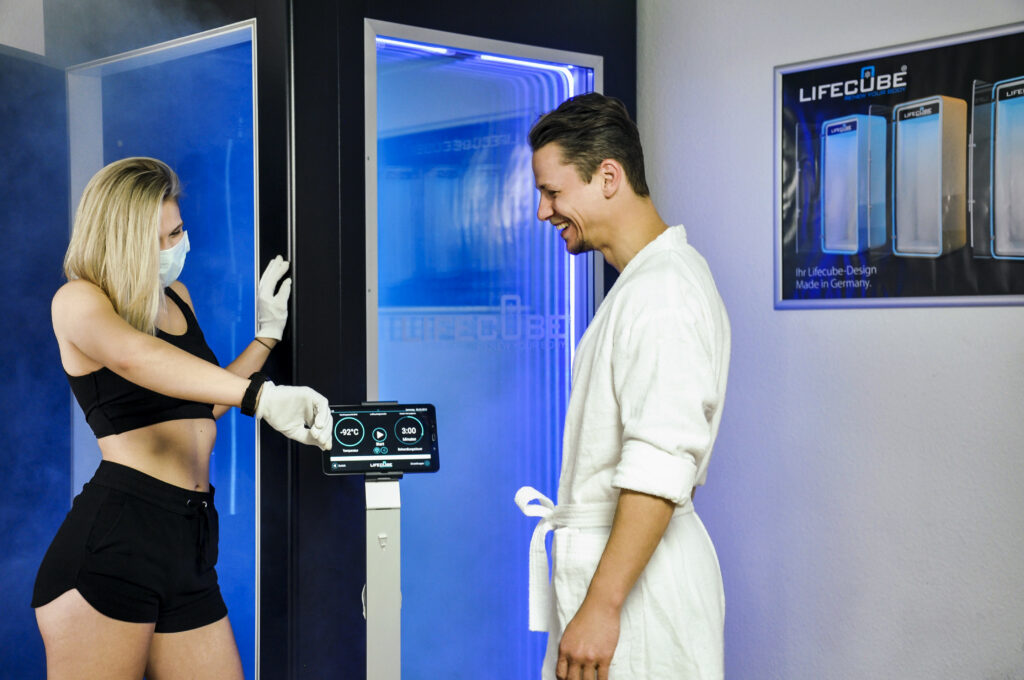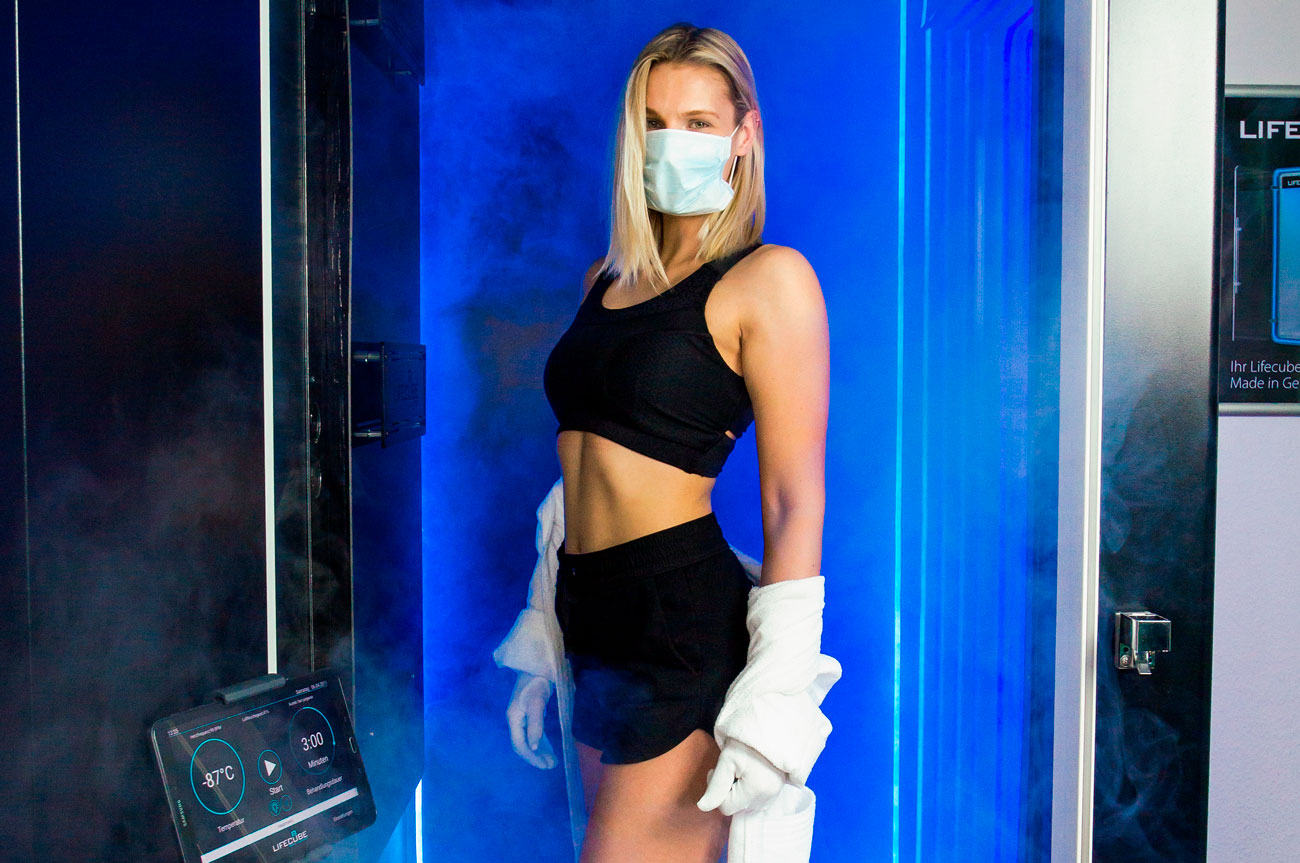Step into any modern wellness studio and you’ll likely find a cryo chamber — a sleek, high-tech pod or room designed to expose your body to sub-zero temperatures for a few invigorating minutes. These cryo chambers aren’t just a novelty; they’re at the heart of how cold therapy delivers its physical and mental benefits. In fact, understanding how they work is key to grasping the science behind cryotherapy, which reveals how extreme cold triggers powerful biological responses that support healing, performance, and overall wellbeing.
What Exactly Is Cryotherapy?

Let’s start with the basics. Cryotherapy — from the Greek words cryo meaning cold and therapeia meaning healing — literally means “cold therapy.” It involves exposing the body to extremely cold temperatures for short bursts of time, usually between two to four minutes. This can be done locally (on a specific part of the body) or in a whole-body cryotherapy chamber.
Originally, cryotherapy was used to treat inflammation in injured joints and muscles. Over time, it’s evolved into a full-body treatment not just for physical recovery, but also for boosting energy, improving mood, enhancing skin, and even burning calories.
But how does standing in a freezing cold chamber actually benefit your body? Let’s look at science

The Cold Truth: How It Works
The science behind cryotherapy is grounded in how our bodies respond to extreme cold. When you enter a cryotherapy chamber, your skin’s surface temperature rapidly drops. This triggers a series of reactions in the body, similar to its natural fight-or-flight response.
Here’s what happens:
- Vasoconstriction
Blood vessels near the skin’s surface constrict, reducing blood flow to the extremities. This helps preserve your core body temperature. - Release of Endorphins
In response to the cold, the brain releases endorphins — your body’s natural mood boosters. Many people report feeling euphoric or energised straight after a session. - Anti-inflammatory Response
Just like applying an ice pack to a swollen ankle, whole-body cryotherapy can reduce inflammation throughout the body. - Increased Circulation Post-Session
Once you step out of the chamber, your blood vessels rapidly dilate again. This increased circulation helps flush out toxins and bring oxygen-rich blood to your muscles and skin.
Metabolic Boost
The body works harder to warm itself up after exposure, which can increase metabolic rate — potentially leading to a small calorie-burning effect.
Recovery: Why Athletes Swear By It
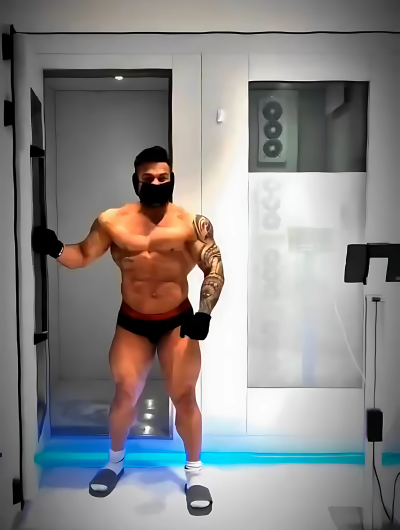
If you’ve ever watched post-match interviews with athletes, chances are you’ve heard someone mention cryotherapy. From Premier League footballers to Olympic sprinters, many athletes swear by it. But why?
It all comes down to recovery.
High-intensity workouts cause microscopic tears in muscle tissue. While this is a normal part of building strength, it also causes soreness and inflammation. Cryotherapy helps reduce this inflammation quickly, meaning less muscle soreness and faster recovery times.
Studies have shown that cold exposure can reduce levels of creatine kinase, a marker of muscle damage, and improve perceived recovery. That’s why so many top performers book in for cryo sessions after training or competition.

Beyond Recovery: Cryotherapy for Skin and Beauty
Now let’s talk about the ‘radiance’ part. Because the science behind cryotherapy isn’t just for athletes — it’s increasingly being used for skin health and cosmetic benefits.
Here’s how:
- Improved Skin Tone: Increased blood flow after a cryo session means more nutrients and oxygen reach the skin, giving you that post-cryo glow.
- Collagen Boost: Some research suggests cold exposure may stimulate collagen production — the protein that keeps our skin firm and youthful.
- Reduced Puffiness: Just like an ice roller can depuff the face, cryotherapy can reduce swelling and tighten pores.
- Acne Reduction: By lowering inflammation and oil production, cryotherapy may help in managing acne-prone skin.
It’s no wonder you’ll find cryo facials popping up in high-end beauty clinics across London.
Mental Wellbeing and Mood Enhancement
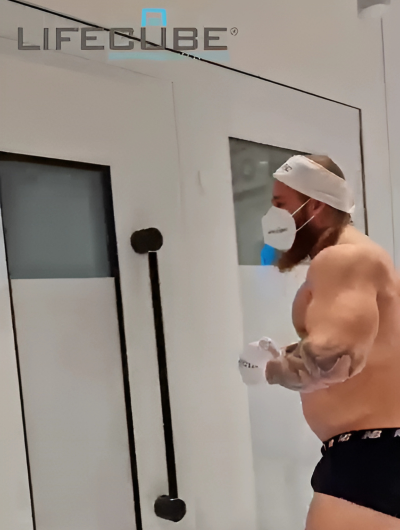
Another fascinating aspect of the science behind cryotherapy is its potential effect on mental wellbeing. Many users report feeling lighter, more energised, and less anxious after just one session.
This isn’t just placebo. The rapid drop in skin temperature stimulates the release of endorphins, adrenaline, and norepinephrine — all chemicals that influence mood, alertness, and pain perception.
There’s even early research looking at cryotherapy’s potential benefits for depression and anxiety. While it’s not a cure, it could be a helpful complementary therapy alongside traditional treatments.

Immune System Support
Your immune system may also benefit from a little chill. When the body is exposed to extreme cold, it becomes more alert — a bit like how you suddenly wake up when you step outside on a frosty morning.
This temporary stress triggers the production of white blood cells, which can strengthen your immune response. There’s also evidence that regular cryotherapy may reduce inflammatory markers like CRP (C-reactive protein), which are linked to chronic illnesses.
That said, cryotherapy isn’t a magic shield against colds and flu, but it could give your immune system a subtle boost over time.
Cryotherapy for Weight Loss: Fact or Fiction?
There’s a lot of buzz about using cryotherapy for weight loss — but what does the science say?
The body burns calories to warm itself up after exposure to the cold. Some estimates suggest you could burn between 200 to 800 calories in a single session. However, that figure depends on multiple factors, including body composition, time in the chamber, and how cold the session is.
While cryotherapy can contribute to a healthy weight management plan, it’s no substitute for regular exercise and balanced nutrition. Think of it as a helpful supplement, not a silver bullet.
Who Should Try It?
Cryotherapy isn’t just for pro athletes or wellness influencers. It’s for anyone looking to:
- Speed up muscle recovery after workouts
- Reduce chronic inflammation or joint pain
- Improve skin health and tone
- Boost mood and mental clarity
- Support general wellbeing and immunity
It’s especially popular among people with arthritis, fibromyalgia, or autoimmune conditions, as the cold exposure may help ease persistent inflammation.
Science Behind Cryotherapy : What to Expect During a Session

Never tried it before? Here’s a quick breakdown of what happens:
- Arrival and Prep
You’ll change into protective gear: gloves, socks, slippers, and sometimes a headband. Men are usually asked to wear underwear to protect sensitive areas. - The Chamber
You step into the cryo chamber — usually filled with cold air . The temperature drops rapidly, often reaching between -90°C and -140°C. - 2–4 Minutes of Chill
It’s intense but brief. You can usually move or dance a little to stay distracted. A therapist stays nearby to monitor you.
Post-Session Glow
Once you’re out, you’ll quickly warm up. Most people feel energised, refreshed, and a little invincible!
If you’re curious to give it a go, there are plenty of cryotherapy packages in London tailored to different goals — from muscle recovery and fat burning to beauty and mental clarity. Whether you’re after a one-off session or a multi-visit bundle, most clinics offer flexible pricing so you can find what suits your lifestyle and budget.

Science Behind Cryotherapy : Is It Worth It?
The science behind cryotherapy is still evolving, but early studies and anecdotal reports suggest it offers real benefits — especially when it comes to recovery, inflammation, and mood.
Whether you’re a weekend warrior, someone managing chronic pain, or just after a radiant glow, cryotherapy could be worth exploring. It’s not a miracle fix, but in combination with a healthy lifestyle, it might just give your body (and mind) the boost it needs.
So the next time you hear someone talk about “stepping into the cold,” you’ll know — it’s not just about freezing for fun. It’s about unlocking the body’s natural healing response and harnessing the chill to feel your absolute best.
FAQ
What is the science behind cryotherapy?
The science behind cryotherapy lies in how the body reacts to extreme cold. Short bursts of cold exposure trigger vasoconstriction, endorphin release, and reduced inflammation, promoting faster recovery and enhanced wellbeing.
How does cryotherapy help with muscle recovery?
Cryotherapy reduces muscle soreness by decreasing inflammation and increasing circulation after intense exercise. It also helps flush out toxins and supports tissue repair.
Can cryotherapy improve skin health?
Yes! Cryotherapy boosts blood flow, which can improve skin tone and texture. It may also stimulate collagen production and reduce puffiness and acne-related inflammation.
Is cryotherapy safe for everyone?
Cryotherapy is generally safe when administered by professionals, but it’s not suitable for people with certain health conditions, such as heart issues, high blood pressure, or during pregnancy. Always consult your GP if you’re unsure.
How many calories can you burn in a cryotherapy session?
Some sources suggest you can burn between 200 to 800 calories per session due to the body’s effort to warm up, though this varies based on individual factors and is not guaranteed.
Does cryotherapy help with mental health or mood?
Cryotherapy may improve mood by releasing endorphins and other brain chemicals like norepinephrine. Many people feel energised and more positive after a session.
How often should I have cryotherapy?
It depends on your goals. For general wellness, 1–2 sessions per week may be enough. Athletes or those managing chronic pain might benefit from more frequent sessions.

